From V12 SUVs, to plug-in hybrid roadsters, we discuss our top pics from the last quarter century
We’re only 25 years into the 21st century, yet it’s already produced a remarkable wave of game-changing cars.
Hard to believe the millennium turn was that long ago, but the nice round 25-year mark gives us a perfect excuse for reflection.
We’ve already highlighted 25 cars that defined each year, and looked at the bestsellers of the era. But choosing the best cars from 2001–2025? That sparked some serious debate – so we headed to Caffeine & Machine to attempt to settle it.
James Attwood: Illya, shall we start with your Mini, given that it’s from 2001?
Illya Verpraet: It’s significant on a number of levels. Originally it was meant to be just a car, but BMW built a whole brand off it – and it has been incredibly successful. The Mini was part of a wave of retro designs, along with the Volkswagen Beetle and the Chrysler PT Cruiser, but it’s one of the only ones that has really stuck.
Those achievements were contingent on how good a product it was. It wasn’t hacked off another platform but was built on a completely bespoke platform, and the designers had freedom to style it and give it characteristics that linked it to the original Mini.
Steve Cropley: In 25 years, nothing else has come along that could be confused with the Mini. And that 2001 car is better looking than the current one.
IV: That’s because it’s its own thing. The current Minis have to share their platform with a BMW, while this one was a clean slate.
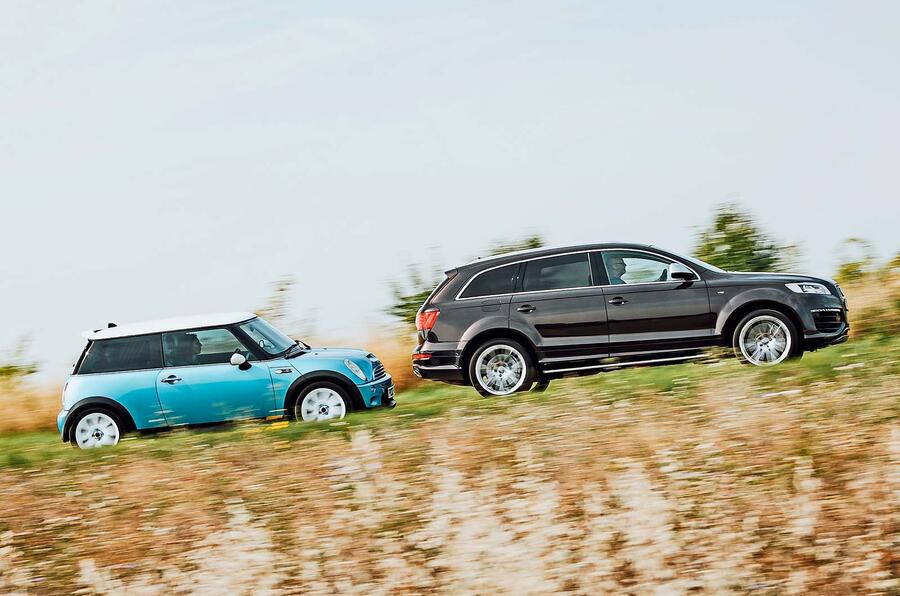
Mark Tisshaw: That car created a brand, but it has remained a problem ever since: even today, the three-door hatchback is the centre of the brand. In 25 years of trying and 10 or 15 other models, nothing else has even got close to being so interesting or so popular.
IV: But it’s the model that keeps Mini grounded. It makes models such as the Countryman and Aceman legitimate. It’s like how Porsche can do whatever it likes with 911-adjacent styling because it still has a proper 911.
JA: Cars like the Renault 5 and Fiat’s 500 and Grande Panda wouldn’t exist if Mini hadn’t proven that retro design works.
IV: Mini is also one of very few manufacturers that have made a premium small car work. The Mini isn’t cheap and doesn’t feel cheap, and it’s a great thing to drive.
MT: When they put the third-generation model on a BMW platform, it showed Mini could handle a big price tag: people still bought it.
IV: Mini was also an EV pioneer: there was a Mini E trial in Oxford and learnings from that influenced the BMW i3. On which note, we probably should have had an electric car here, most likely a Tesla Model 3.

Rachel Burgess: Tesla is about more than just being an EV, though. Every brand in the past 25 years has been influenced by Tesla and tried to follow what it has done as a technology firm.
IV: The Model 3 was such a big step up in electric technology: here’s an EV that is actually good, has range and drives well.
RB: Every CEO from every mainstream manufacturer said: “We’re watching what Tesla is doing.” Do you remember [former Volkswagen Group CEO] Herbert Diess on social media saying ‘oh, me and Elon are hanging out’?
MT: Steve, you interviewed Musk when we gave him an award in 2014. How did you find him?
SC: I met him in Westfield shopping centre.
RB: He wouldn’t go there now.
SC: Neither would I… Anyway, he was explaining that if people were out buying socks, they’d be in a buying mood and would be interested in cars for sale. That’s why they developed Tesla stores.
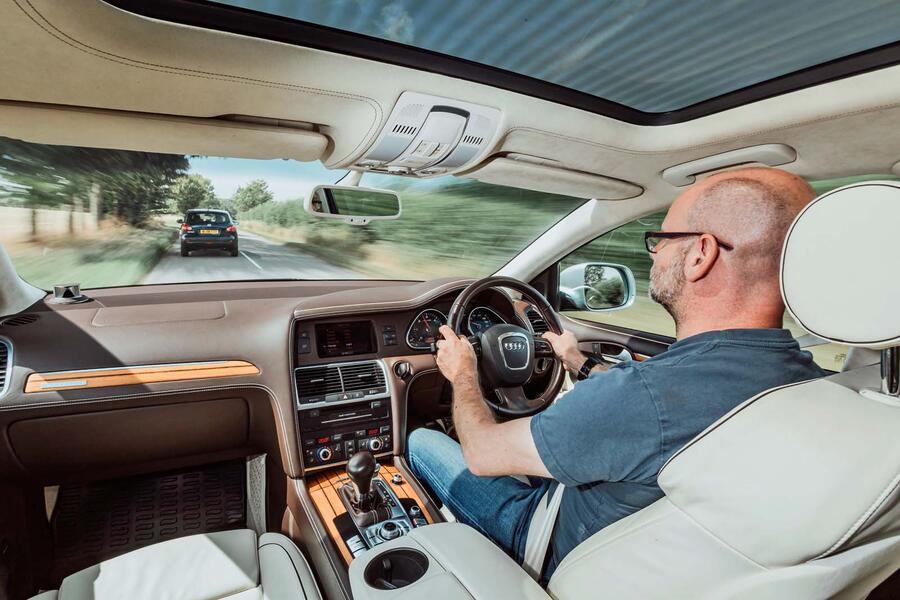
JA: Everyone thinks about Tesla as being an industry outsider, but the first Roadster was basically engineered by Lotus.
Matt Prior: I tried to bring one today. We had one in for a road test in 2009. It was the only EV at the time that we could drive from the office in Teddington to MIRA in Warwickshire and do something useful when we got there.
SC: It was the first car that really conveyed electric performance. I remember going for the throttle, and the car sort of erupted before my foot even got to the end of the accelerator track.
JA: So, Matt, since you couldn’t turn up in a Roadster, what small, sleek car did you pick?
MP: An Audi Q7. Imagine that in 200 years you’re setting up an exhibit at the Victoria and Albert Museum trying to define what early 21st-century life was like. If you want a car that exemplifies that, it would be a big, premium SUV.
At the start of the century, Audi was selling 500,000 cars; they’re now doing two million. Mercedes-Benz and BMW are similar. Between 2010 and 2019, the number of SUVs on the road multiplied by six. The Q7 was Audi’s first SUV, and now Audi, Mercedes-Benz, BMW, Volvo and others are all in effect SUV brands.
My example, I grant you, is an uncommon V12 diesel, but the Volkswagen Group diesel story is one of the defining events of the past 25 years. Dieselgate prompted the VW Group to reinvent itself and led to the VW ID 3, which was probably released before it was ready. Legislators also decided manufacturers couldn’t be trusted, so they lost any influence in decisions such as when to introduce an EV mandate.
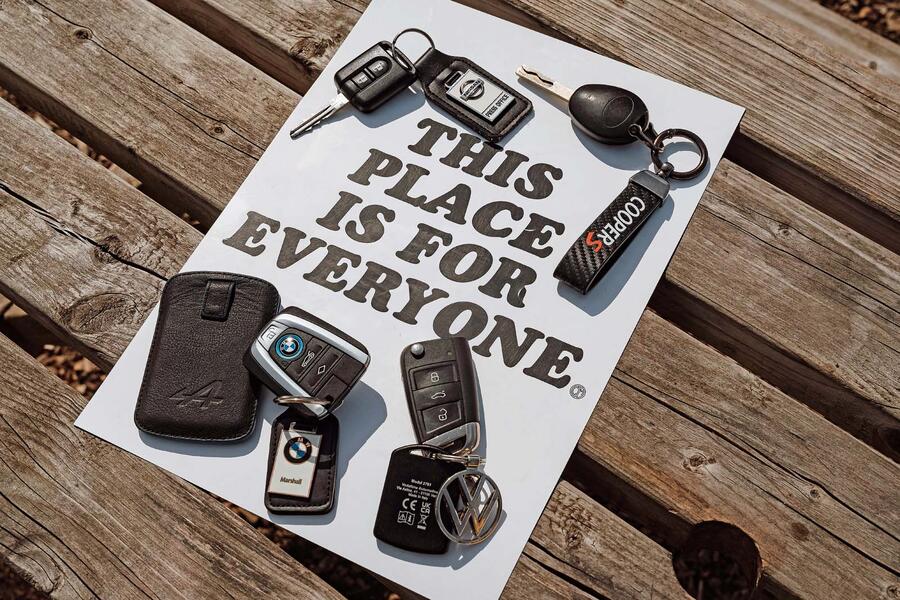
Also, German car firms are brilliant at making cars, but they’re not technology experts. The emergence of China as a market was very appealing for European firms, but to make cars there they had to do joint ventures with Chinese firms.
They thought the European players would do the manufacturing and the local firms would do the red tape, but the Chinese firms took all of the manufacturing knowledge, and now, because they are technology experts, have introduced models that are better engineered than cars like that Q7. The story of the next 25 years will be about many of those Chinese cars.
MT: Someone from a national dealer chain told me his technicians say the best-built cars, bar none, are BYDs. Which is quite terrifying for Western car firms.
RB: We said earlier about there not being an EV here, but I’ve brought a car with an electrified plug-in hybrid engine: a BMW i8. It was incredibly innovative and felt like a real turning point for electrification. It arrived in 2014 and still looks brilliant today: it’s space-age.
You could also put this in the V&A and in 200 years it would still look amazing. It also has a 1.5-litre Mini engine, which I loved talking about to anyone who was interested, because it always surprised them. It did about 30 miles on battery power, which is about the same as my long-term Evoque PHEV now.
The technology has moved on in 11 years, but not by that much. It did 0-62mph in 4.4sec, which is all you ever need. BMW pitched it as a hybrid supercar, which was debatable, but it was genuinely a rival to the 911.
JA: It didn’t make our final list because it felt like BMW never really followed it up properly or built off it, so it was something of a dead end.
RB: It sold more than BMW expected. Because of the low tax, it built a huge fleet following: company car drivers who wanted a 911 got an i8. And although you could say it was a dead end, it pushed technology in many ways, such as the use of CFRP to keep it light. A lot of innovation on that car helped BMW and the whole industry.
JA: It’s frustrating that if BMW turned around and launched the i8 and i3 today, with updated powertrains, you’d absolutely believe they were conceived this year. They would be amazing.

SC: Former BMW sales boss Ian Robertson was the main advocate for those cars, and when he left soon after their launch, it suggested they weren’t going to be smash hits. They weren’t profitable, were they?
RB: Early cars that innovate quite often aren’t.
MP: The world probably wasn’t ready for it in 2014. And it’s really expensive to engineer lightweight cars at scale, which was a problem for the i3 and i8, the Audi A2 and other cars that haven’t made any money.
IV: The i8 was designed to be obviously forward-looking. It’s another difference with Tesla: the Model S is massively innovative, but it looked like a normal car. That’s what people wanted.
JA: Talking about cars that confused on first impression, I’ve brought a Nissan Qashqai. Of the cars here, the Qashqai, good or bad, has had the most impact in terms of the cars we see on the roads today: everything is a crossover or an SUV.
The original plan was to develop a car bigger than the Almera, but Nissan decided that wouldn’t be profitable. So it looked at the popularity of big 4x4s and realised people liked the high-riding position but didn’t want all-wheel drive and agricultural interiors; they just wanted a normal car with a high driving position.
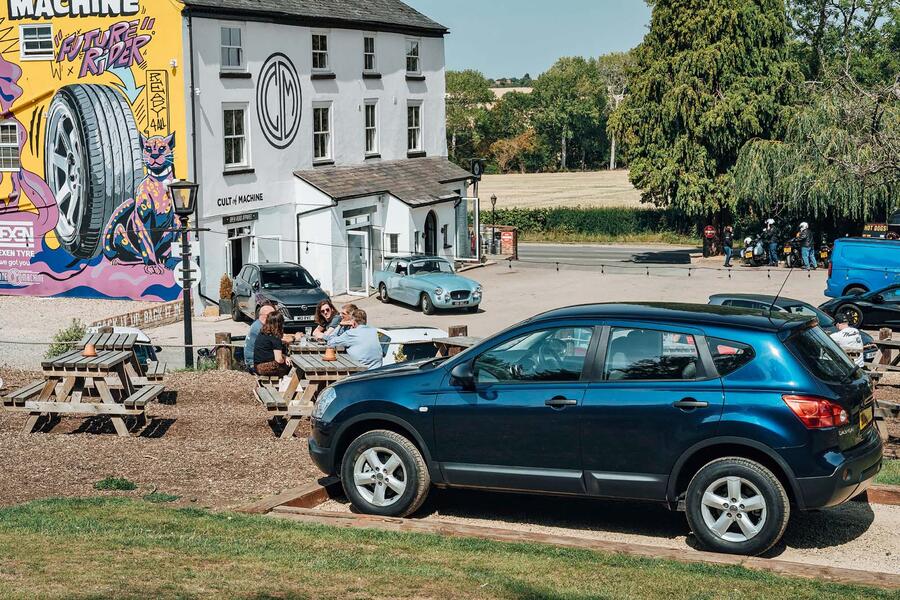
SC: It’s interesting to remember how crap the Almera was and the step Nissan made from that, a car nobody wanted, to the Qashqai.
MP: When I first drove the Qashqai, I just felt ‘it’s not as big as a Primera inside but it’s taller, has worse fuel economy and costs about 20% more’. And 20 years later, I was still right.
IV: The Qashqai and i8 are a nice contrast of how enthusiasts are so often not representative of the wider population. In both cases, a manufacturer took a punt on something different from the norm. The i8 is very cool, but the Qashqai worked because people actually wanted it. It found a completely new segment: it just struck gold.
MT: We think of the Qashqai as being radical, but that Mk1 is really just a tall hatchback.
JA: It looks like a tall hatchback now because everything is an SUV. The Qashqai is also a British success story: it was designed and engineered here and built in Sunderland.
SC: Andy Palmer was involved in its development, wasn’t he?
MT: David Moss was probably the true creator.
IV: David Twohig worked on the Qashqai – and on the Alpine A110.
MT: It’s like football: the same great managers pop up at different clubs, and those clubs tend to win. If you’re good, you can work on a Qashqai and you can work on an A110.
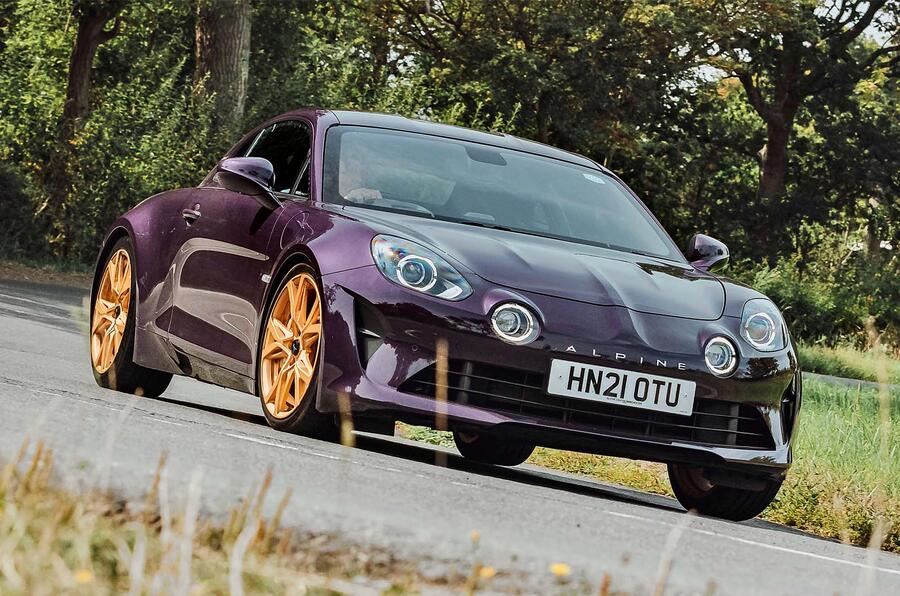
SC: I brought my own A110 today. It fits an interesting gap between a Mazda MX-5 and a Porsche 911. And it’s still a Renault, so when you get it serviced, it’s £400 instead of £1400. Because of the mid-engine layout, it has nice balance and steering. I’ve owned nine Lotuses and they were all light and delicate in their handling – and this is the best ‘Lotus’ of them all.
RB: It feels defining because it’s so different from what everyone else was doing. It’s almost anachronistic: here was this pure driver’s car in a world of SUVs and fancy technology.
SC: It could have failed, couldn’t it? It’s quite similar to the Alfa Romeo 4C in outlook.
MT: Has it actually worked? We love it, but you don’t see many of them. It’s like Mini again: will they ever better their first car, and can they make a brand out of it? You look at what’s coming from Alpine and all I see is slightly faster, slightly heavier Renaults.
MP: It’s like the Polestar 1: it’s different from the other cars the brand is going to launch. The first car is one for engineers to do their thing on. Nobody’s expecting it to make any money, so they just get away with it.
JA: When the A110 was launched, I’m not sure they had plans for it as a brand, but because it was successful, they wanted to do something – but they didn’t know what.
SC: I didn’t buy that car viewing it as part of a family; I just liked it. I’ve done a couple of track days in it, and even on basic suspension you can, if you’re good enough, do a bloke in a Porsche Cayman, which is fun. I intend to hold on to it, because it’s light and it has a simple, effective engine that sounds good.
JA: Most of us turned up in a car that was pioneering. Mark, you rocked up in a Volkswagen Golf…
MT: The Mk7 Golf represents as close to perfection as you can get in a mainstream car. It’s the result of some serious engineering power: it’s based on the MQB platform, on which 40 million cars have been built, and 40 million more will use it into the 2030s. It represents the engineering might of the VW Group at its biggest. I’ve brought a facelifted GTI, which is the Golf at its sweetest.
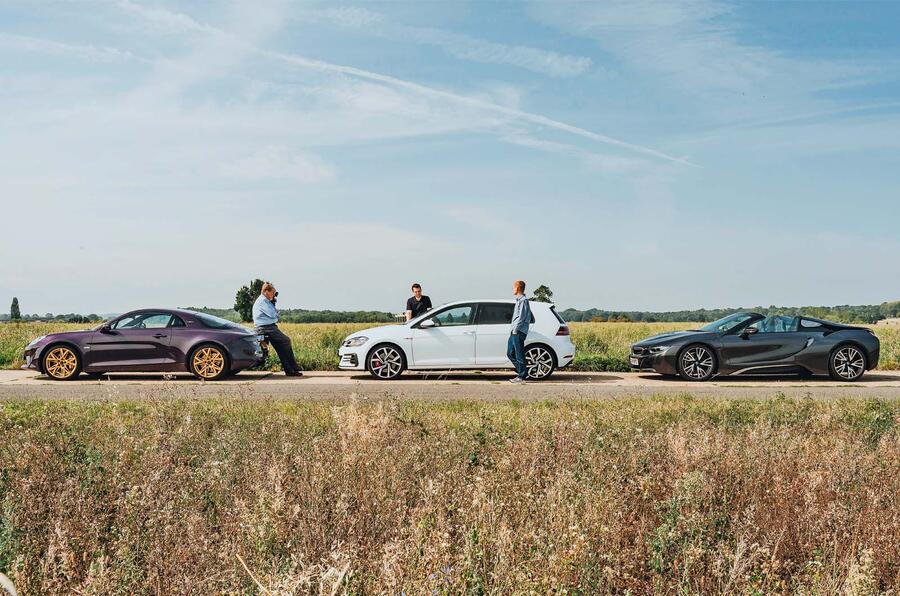
I ran one as a long-termer in 2018, and I was so close to buying it afterwards – although it was a three-door, so it wouldn’t have worked with my dog. The Mk8 Golf was a backward step in almost every department.
SC: When they were doing the Mk8 Golf they were also working on the ID 3 and all that. Do you think they got diverted?
MT: It’s back to Matt’s point about Dieselgate changing Volkswagen. It meant the ID cars were rushed through before they were ready. With the enormous costs of developing the MEB platform, some of the tech had to go back into the ICE cars, and some of the usability flaws of the ID 3 made their way over to the Golf.
SC: There’s also a huge shortage of personnel if you’re trying to build two cars instead of one.
MT: In the coming years, firms such as VW and Mercedes will offer identically styled ICE cars and EVs on completely different platforms. So there will be an ID Golf on an EV platform and a Golf based on a combustion-engine architecture.
MP: Is it the best car… in the world?
MT: If I could have one car to drive forever more, it would be a Mk7.5 Golf GTI. You could slip that car into almost any group test today and it would have a chance of winning.

RB: If I were going to pick just one car to buy, it would be a three-door Mk7 Golf GTI. I’ve always found those sorts of cars are my sweet spot. I don’t want to be driving a supercar; I want a car I can really live with and not be scared of chucking around corners. To me, that’s the perfect car.
SC: Where’s the Ford Focus in this?
MT: I think it lacks longevity. It has better handling, but it’s the quality. If you got in a six-year-old Focus now, it would feel dated.
RB: We should talk about other cars that should have been in the mix for today. Are we missing something high-end?
MP: The Ferrari 458. I did think about trying to find one, because it is one of the greatest sports cars/supercars of the past 25 years. Enough owners are not buying 296s because they would still rather have a 458.
MT: McLaren really deserves a mention: the 570S was peak McLaren. The firm is about to change a lot, so we don’t know what will happen after that, but McLaren at its peak made the best Ferraris even better.
IV: If we’re talking hypercars, the ‘holy trinity’ – the McLaren P1, LaFerrari and Porsche 918 – should be mentioned. They started the hybrid thing, parallel to the i8; they pushed the boundaries of speed and technology. It was the first time hybrid technology was applied in that way, and now everything is electric in some way.

JA: If you had to drive home in one of the six cars here, and you couldn’t take the one you brought, what would be your pick?
SC: The Mk1 Mini, because I’m completely persuaded by the concept, even after 25 years. And I was the idiot who said ‘it will never work, because it’s not 10 feet long and it wasn’t designed by Alec Issigonis’.
IV: I’ll take Steve’s A110. It’s just a compact, sensibly sized sports car without much bullshit around it. I could keep driving it forever.
MT: It would be the Mini for me too. It has aged unbelievably well.
MP: A coupé version of the i8, because I can see myself one day buying one.
RB: It’s the Golf GTI.
JA: I love that GTI, but I’ll take the i8 – since I’ve volunteered to drive it back to the dealer…
Source: Autocar
